Quick Betimate
Popular Leagues
-
UEFA Nations League
-
England (23)
- FA Cup (1)
- Premier League (9)
- Championship (1)
- League 1 (1)
- League 2 (1)
- National League (2)
- National League North (1)
- National League South (1)
- Premier League 2
- Championship Women
- Derbyshire Senior Cup
- Development League 2 (1)
- FA Cup Women (1)
- FA Trophy
- FA Vase
- Isthmian Division One North
- Isthmian Division One South
- Isthmian Premier Division
- National League Cup
- Northern League Division One
- Northern Premier League
- Reserve Matches
- Southern Premier League Central
- Southern Premier League South
- Super League Women
- U21 Premier League Cup
- Northern Ireland Championship
- Northern Ireland Championship Women
- Northern Ireland Cup
- Northern Ireland Intermediate Cup
- Northern Ireland League Cup Women
- Northern Ireland Play-Offs
- Northern Ireland Premier
- Northern Ireland Premier Intermediate League
- Northern Ireland Premier League Women (4)
- Northern Ireland Reserve League
- Scotland Regional Cup
- Wales League Cup Women
-
UEFA Champions League (1)
-
UEFA Europa League (1)
-
Spain (96)
- La Liga (10)
- Segunda (10)
- Tercera Group 1 (3)
- Tercera Group 2 (3)
- Tercera Group 3 (2)
- Tercera Group 4 (2)
- Tercera Group 5 (2)
- Tercera Group 6 (3)
- Tercera Group 7 (2)
- Tercera Group 8 (2)
- Tercera Group 9 (2)
- Tercera Group 10 (2)
- Tercera Group 11 (3)
- Tercera Group 12 (2)
- Tercera Group 13 (3)
- Tercera Group 14 (2)
- Tercera Group 15 (2)
- Tercera Group 16 (4)
- Tercera Group 17 (3)
- Tercera Group 18 (2)
- Youth League
- Copa De La Reina (1)
- Copa del Rey
- Kings League - 40 mins play (1)
- Primera Division RFEF Group 1 (10)
- Primera Division RFEF Group 2 (10)
- Primera Federacion Women
- Primera Women (8)
- Queens League - 40 mins play (1)
- Regional Cup
- Regional League
- Segunda Division RFEF Group 1
- Segunda Division RFEF Group 2
- Segunda Division RFEF Group 3
- Segunda Division RFEF Group 4
- Segunda Division RFEF Group 5
- Segunda Division RFEF Play-Offs
- Segunda Federacion Women
- Tercera Federacion Women (1)
- Women Regional League
-
USA (854)
-
Germany (193)
- Bundesliga I (9)
- Bundesliga II (9)
- DFB Pokal (1)
- Regionalliga Bayern (8)
- Regionalliga North (7)
- Regionalliga North East (9)
- Regionalliga South West (9)
- Regionalliga West (8)
- Oberliga Baden-Wuerttemberg (5)
- Oberliga Bayern North (9)
- Oberliga Bayern South (7)
- Oberliga Bremen
- Oberliga Hamburg
- Oberliga Hessen (9)
- Oberliga Mittelrhein (6)
- Oberliga Niederrhein (8)
- Oberliga Niedersachsen (9)
- Oberliga NOFV Nord (6)
- Oberliga NOFV Sud (8)
- Oberliga Rheinland-Pfalz/Saar (9)
- Oberliga Schleswig-Holstein (8)
- Oberliga Westfalen (7)
- 3. Liga (10)
- Bundesliga II Play-Offs
- Bundesliga II Women (7)
- Bundesliga Play-Offs
- Bundesliga U19 (24)
- Bundesliga Women
- DFB Pokal Women
- Regionalliga Play-Offs
- U19 Cup (1)
-
Italy (44)
- Serie A (10)
- Serie B (1)
- Serie C Group A
- Serie C Group B
- Serie C Group C
- Campionato Nazionale
- Campionato Primavera 1 (6)
- Campionato Primavera 2 (4)
- Serie D (2)
- Coppa Italia
- Coppa Italia Women (1)
- Campionato Primavera 3 (2)
- Campionato Primavera 4 (2)
- Serie A Women
- Serie B Play-Offs (2)
- Serie B Women
- Serie C Play-Offs (5)
- Serie C Super Cup (1)
- Serie D Play-Offs (8)
- U19 League Women
-
France (46)
-
Netherlands (25)
-
Scotland (15)
-
Australia A-League (3)
-
Japan J-League (10)
-
Japan J2-League (10)
-
Indonesia Liga 1 (7)
-
Denmark Superligaen (5)
-
Cyprus Division 1 (3)
-
Israel Premier League (3)
-
Colombia Primera A (9)
-
Esport (15)
Other Leagues
-
Albania
-
Algeria (15)
-
Andorra (7)
-
Angola (8)
-
Argentina (98)
- Nacional B (17)
- Primera B Metropolitana (11)
- Primera C Metropolitana (13)
- Reserve League
- Cup (3)
- Torneo A (18)
- Copa Santa Fe
- Championship Women (7)
- Copa de la Liga Profesional
- Copa Santa Fe Women
- Liga Profesional (4)
- Liga Profesional Reserves (15)
- Nacional Reserve League
- Regional League
- Youth League (10)
-
Armenia (10)
-
Aruba (3)
-
Australia (197)
- A-League (3)
- A-League Women (1)
- Capital Territory NPL2 (4)
- Capital Territory NPL2 U23 League
- Capital Territory Premier League (4)
- Capital Territory Premier League Women (1)
- Capital Territory Premier League Women Reserves
- Capital Territory U23 League (4)
- Cup
- Cup Qualifying (2)
- Darwin Premier League (2)
- FFA Cup Qualifying
- New South Wales League 1 (7)
- New South Wales League 2 (7)
- New South Wales NPL Women (7)
- New South Wales NPL2 Women
- New South Wales Premier League (6)
- New South Wales U20 League (6)
- Northern NSW Division 1 (4)
- Northern NSW Premier League (5)
- Northern NSW Premier League Women (2)
- Northern NSW Reserves League (4)
- NPL Queensland (6)
- NPL Queensland U23 (5)
- NPL Queensland Women (5)
- NPL Victoria (4)
- NPL Victoria U23 (4)
- NPL Victoria Women (5)
- NSW League 1 U20 (5)
- NSW League 2 U20
- Queensland PL 2 U23
- Queensland PL U23 (6)
- Queensland Premier League (5)
- Queensland Premier League 2 (6)
- Queensland Premier League 2 Women
- Queensland Premier League 3 (5)
- Queensland Premier League 4
- Queensland Premier League Women
- SA Premier League Reserves (5)
- SA Premier League Women (5)
- SA Premier League Women Reserves
- South Australia Premier League (4)
- South Australia State League 1 (6)
- South Australia State League Reserves (6)
- Sunday League Premier Division
- Sunday League Premier Division Reserve
- Tasmania Championship (4)
- Tasmania Championship 1
- Tasmania Championship Women
- Tasmania NPL U21 League
- Tasmania Premier League (4)
- Tasmania South Division 1
- Tasmania Super League Women
- Victoria PL 1 U23 (4)
- Victoria Premier League 1 (6)
- Victoria Premier League 2 (2)
- Victoria Premier League Women
- Victoria State League 1 (2)
- Victoria State League 1 Reserves
- Victoria State League 2
- Victoria State League 2 Reserves
- WA Premier League Women (1)
- WA Premier League Women U21
- WA State League 1 Reserves (6)
- Western Australia Premier League (6)
- Western Australia State League 1 (6)
- Western Australia State League 1 Women
- Western Australia State League 2
- Western Australia U23 League (5)
- Australian Matches
-
Austria (36)
-
Azerbaijan (11)
-
Bahrain (3)
-
Bangladesh (2)
-
Barbados
-
Belarus (14)
-
Belgium (7)
-
Benin
-
Bhutan
-
Bolivia (19)
-
Bosnia & Herzegovina (13)
-
Botswana (8)
-
Brazil (185)
- Serie A (10)
- Serie B (8)
- Serie C (10)
- Campeonato Amapaense (1)
- Campeonato Baiano 2 (4)
- Campeonato Brasileiro A2 Women (7)
- Campeonato Brasileiro Serie B U20 (1)
- Campeonato Carioca A2
- Campeonato Carioca B (2)
- Campeonato Goiano 2 (4)
- Campeonato Maranhense (1)
- Campeonato Mineiro 2 (8)
- Campeonato Mineiro U20 (6)
- Campeonato Paranaense 2 (5)
- Campeonato Paulista A4
- Campeonato Paulista U20 (9)
- Campeonato Rondoniense
- Catarinense 2 (4)
- Copa Espirito Santo (4)
- Copa Nordeste (4)
- Copa Rio Women
- Copa Verde
- Matches
- Matches Women
- Paraense
- Paulista Serie B (1)
- Paulista Women (4)
- Serie A U20 (10)
- Serie A1 Women (7)
- Serie A2 Women (2)
- Serie A3 Women (16)
- Serie D (33)
- U20 Cup
- U20 League (8)
- U20 Women Cup
- Copa do Brasil (16)
- Women’s Friendly
-
Bulgaria (15)
-
Burkina Faso (1)
-
Burundi
-
Cambodia (5)
-
Cameroon (8)
-
Canada (6)
-
Chile (34)
-
China (38)
-
Colombia (25)
-
Costa Rica (3)
-
Côte d’Ivoire
-
Croatia (21)
-
Cuba (3)
-
Cyprus (3)
-
Czech Republic (93)
-
Denmark (40)
-
Djibouti
-
Dominica (1)
-
Dominican Republic (1)
-
Ecuador (20)
-
Egypt (23)
-
El Salvador (5)
-
Estonia (18)
-
Ethiopia (7)
-
Faroe Islands (4)
-
Fiji (4)
-
Finland (124)
-
Gambia (4)
-
Georgia (10)
-
Ghana (9)
-
Gibraltar
-
Greece (9)
-
Guatemala (2)
-
Haiti (2)
-
Honduras (2)
-
Hong Kong SAR China (11)
-
Hungary (20)
-
Iceland (24)
-
India (1)
-
Indonesia (7)
-
Iran (11)
-
Iraq (13)
-
Ireland (16)
- Republic of Ireland FAI Cup (7)
- Republic of Ireland FAI Intermediate Cup
- Republic of Ireland First Division (1)
- Republic of Ireland Leinster Senior Cup
- Republic of Ireland Leinster Senior League
- Republic of Ireland Munster Senior League
- Republic of Ireland National League Women (6)
- Republic of Ireland Premier Division (2)
- Republic of Ireland U20 League
-
Israel (15)
-
Jamaica (2)
-
Japan (86)
-
Jordan
-
Kazakhstan (14)
-
Kenya (9)
-
Kuwait (3)
-
Kyrgyzstan (2)
-
Latvia (13)
-
Lebanon (6)
-
Liechtenstein (1)
-
Lithuania (25)
-
Luxembourg (17)
-
Macau SAR China (1)
-
Macedonia (15)
-
Malawi (7)
-
Malaysia
-
Mali
-
Malta (1)
-
Mauritania (1)
-
Mexico (10)
-
Moldova (7)
-
Mongolia
-
Montenegro (10)
-
Morocco (8)
-
Mozambique
-
Myanmar (Burma) (4)
-
Namibia
-
Nepal
-
New Zealand (14)
-
Nicaragua (2)
-
Niger
-
Nigeria (10)
-
Norway (99)
- Eliteserien (8)
- Division 1 (8)
- Cup (8)
- Cup Women (8)
- Division 1 Play-Offs
- Division 1 Women (6)
- Division 2 Group 1 (7)
- Division 2 Group 2 (7)
- Division 2 Group 3
- Division 3 Group 1 (7)
- Division 3 Group 2 (7)
- Division 3 Group 3 (7)
- Division 3 Group 4 (7)
- Division 3 Group 5 (7)
- Division 3 Group 6 (7)
- Interkretsserie U19
- Toppserien Women (5)
- U19 Elite League
- Youth Cup
-
Oman
-
Panama (4)
-
Paraguay (22)
-
Peru (20)
-
Philippines
-
Poland (82)
-
Portugal (23)
-
Puerto Rico (2)
-
Qatar (2)
-
Romania (26)
-
Russia (44)
-
Rwanda (7)
-
Saint Kitts and Nevis (2)
-
San Marino (2)
-
Saudi Arabia (13)
-
Senegal (8)
-
Serbia (17)
-
Seychelles
-
Sierra Leone (5)
-
Singapore (5)
-
Slovakia (23)
-
Slovenia (13)
-
Solomon Islands (2)
-
South Africa (20)
-
South Korea (28)
-
Suriname
-
Sweden (89)
- Europe Friendlies
- Allsvenskan Qualification
- Superettan Qualification
- 1.div Norra (7)
- Cup (1)
- 1.div Södra (6)
- 2.div Norra Götaland (5)
- 2.div Norra Svealand (6)
- 2.div Norrland (1)
- 2.div Södra Götaland (4)
- 2.div Södra Svealand (7)
- 2.div Västra Götaland (5)
- Allsvenskan (8)
- Cup Qualification (6)
- Cup Women (1)
- Damallsvenskan (5)
- Div 1 Relegation (8)
- Elitettan (7)
- Juniorallsvenskan (6)
- Superettan (6)
-
Switzerland (36)
-
Taiwan (3)
-
Tajikistan
-
Tanzania (9)
-
Thailand (4)
-
Togo
-
Trinidad and Tobago (5)
-
Tunisia (11)
-
Turkey (28)
- Türkiye 1 Lig (2)
- Türkiye 2 Lig Beyaz
- Türkiye 2 Lig Kirmizi
- Türkiye 2.Lig Play-offs (4)
- Türkiye 3. Lig Promotion Group Play-off (2)
- Türkiye 3.Lig Group 1 (1)
- Türkiye 3.Lig Group 2
- Türkiye 3.Lig Group 3
- Türkiye 3.Lig Group 4 (1)
- Türkiye Cup
- Türkiye Super Lig (9)
- Türkiye U19 League (9)
- Türkiye Womens League
-
Uganda (15)
-
Ukraine (18)
-
United Arab Emirates (14)
-
Uruguay (37)
-
Uzbekistan (11)
-
Venezuela (10)
-
Vietnam (14)
-
Wales (1)
-
Zambia (9)
-
Zimbabwe (9)
10 Oldest Football Stadiums in England

Football has deep roots in Great Britain, having established itself as a central part of the nation's sporting identity over the past couple of centuries. This long-standing connection is beautifully reflected in the stadiums that have withstood the test of time, with many constructed over a century ago and still standing strong today.
Some of the most iconic football venues in the UK were built more than 100 years ago. In this article, we've selected and ranked the 10 oldest stadiums in Britain.
| 10 oldest Stadiums in British Football | ||
|---|---|---|
| Rank | Stadium | Built In |
| 1 | The Racecourse Ground | 1801 |
| 2 | Bramall Lane | 1855 |
| 3 | Field Mill | Pre-1861 |
| 4 | Tannadice Park | 1870 |
| 5 | Stamford Bridge | 1877 |
| 6 | Rodney Parade | 1877 |
| 7 | Deepdale | 1878 |
| 8 | Ewood Park | 1882 |
| 9 | Turf Moor | 1883 |
| 10 | Anfield | 1884 |
10. Anfield (Liverpool)
Built 1884
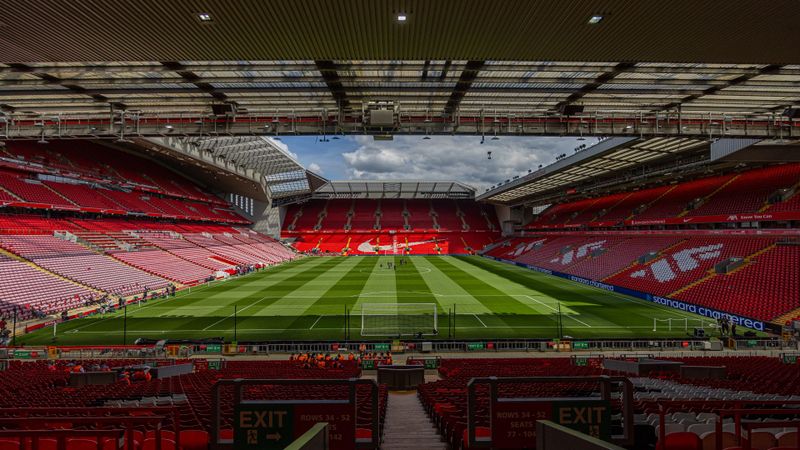
Anfield is not only one of the most iconic stadiums in the world, but also one of the oldest, with its construction completed 140 years ago.
The historic venue has witnessed some unforgettable moments, including Liverpool's remarkable Champions League comeback against Barcelona in the 2018/19 season. The electric atmosphere on European nights at Anfield is legendary, as are the passionate renditions of the club's anthem, "You'll Never Walk Alone."
Such an atmosphere isn't built overnight. It stands as a testament to the value of loyalty and tradition, with Liverpool’s unwavering commitment to Anfield over the years paying off both in terms of atmosphere and on-field success. Despite having the financial means to move to a new, state-of-the-art stadium, the decision to stay at Anfield has proven to be a winning one for the club.
9. Turf Moor (Burnley)
Built 1883

Turf Moor, as fans know it today, has a rich history that dates back to 1883, though the site was originally used by Burnley Cricket Club for around 40 years before it became home to the football club. Since its construction, Turf Moor has been Burnley's home without interruption.
Just three years after its opening, the stadium made history by becoming the first football ground to host a member of the royal family. Prince Albert Victor attended a friendly match against Bolton Wanderers in 1886.
Turf Moor’s historical importance extends further. In 1888, it was the venue for a match on the opening day of the inaugural Football League season, where Preston North End, who would go on to win the league undefeated, defeated Burnley 5-2.
8. Ewood Park (Blackburn Rovers)
Built 1882
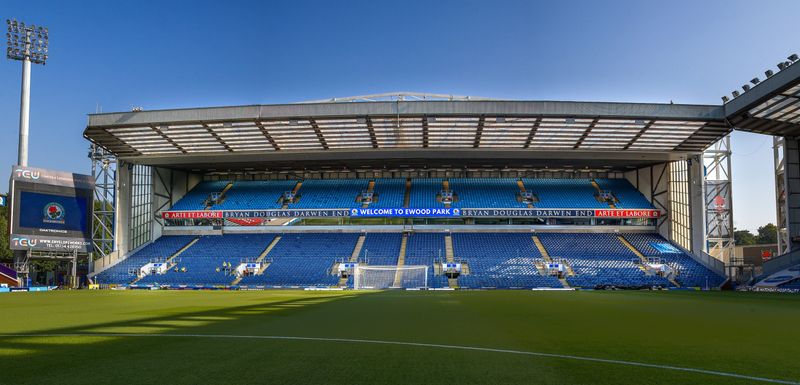
Originally named Ewood Bridge when it was built in 1882, Ewood Park became the home of Blackburn Rovers in 1890, who eventually purchased the ground in 1893. Initially used for various sporting events, it became predominantly a football venue with the club's permanent occupation.
The stadium has undergone significant renovations over the years, notably in the early 1990s after Jack Walker acquired the club. This redevelopment included the construction of new stands and an expanded seating capacity. Completed in 1994, the first match at the newly revamped Ewood Park was marked by a dominant 7-0 victory over Nottingham Forest.
7. Deepdale (Preston North End)
Built 1878

Although Deepdale ranks as the seventh-oldest stadium on this list, it holds the distinction of having the longest continuous use by a single football club. Opened in 1878 specifically for Preston North End, the club has remained at the venue ever since, never relocating or being forced to move.
The stadium proudly features a statue of Sir Tom Finney, outside the stand named in his honor. Finney, who played for Preston from 1940 to 1960, made over 400 appearances for the club and scored more than 200 goals during his remarkable career.
6. Rodney Parade (Newport County)
Built 1877
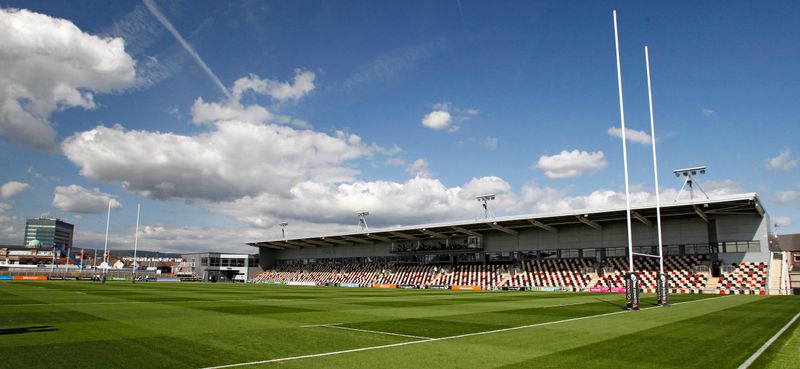
Rodney Parade is mainly the home of rugby union team Dragons RFC, who share the stadium with Newport County, currently competing in League Two. Newport County moved to the ground in 2012, having previously played at Newport Stadium.
Notably, Rodney Parade was the first stadium in Wales to install floodlights, which were added in 1879, two years after the stadium was originally built. The venue is one of the busiest in Britain, hosting a range of sports, including regular squash matches, with four dedicated courts on-site.
5. Stamford Bridge (Chelsea)
Built 1877
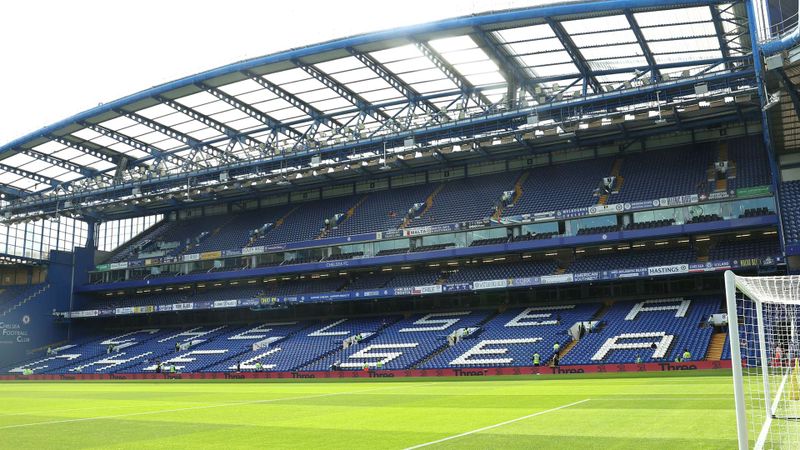
Stamford Bridge has seen significant transformation since its construction in 1877. Initially designed as an oval for athletics, it became the permanent home of Chelsea in 1905, shifting its focus to football. Over the years, the stadium underwent major structural changes to evolve into the venue we know today.
The stadium's prominence has grown in tandem with the fortunes of its occupants, especially after Roman Abramovich's purchase of the club. His investment not only rescued Chelsea from financial instability but also provided the resources to turn the Blues into consistent title contenders.
4. Tannadice Park (Dundee United)
Built 1870
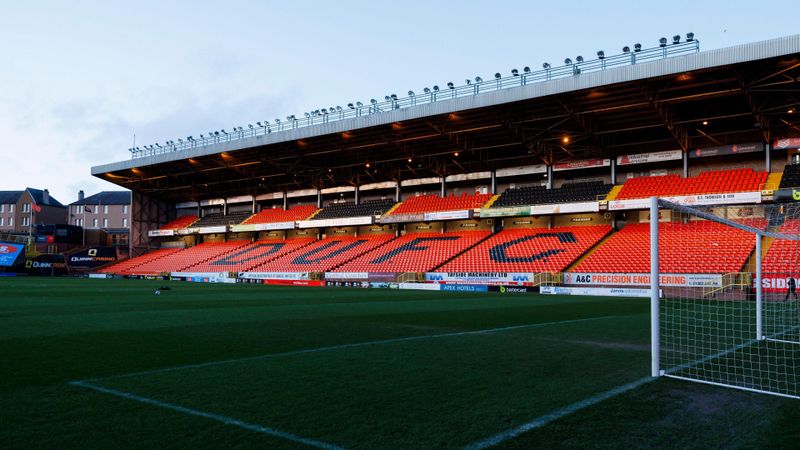
Tannadice Park, built in Dundee in 1870, holds the distinction of being the oldest stadium in Scotland. For nearly the first 40 years of its existence, it was known as Clepington Park, a name that was changed in 1909.
That renaming coincided with Dundee United, originally founded as Dundee Hibernian, taking up residence at the ground after the club's formation. Tannadice is located just 200 yards from Dens Park, home of rivals Dundee FC, making it the closest pair of football grounds in the United Kingdom.
3. Field Mill (Mansfield Town)
Built pre-1861

Mansfield Town's Field Mill is one of the oldest football stadiums in Britain, though its exact age is subject to some debate. It is known to have hosted football matches since at least 1861, with some reports suggesting the ground may be even older.
The stadium became the home of Mansfield Town in 1919, though they were not the first football club to occupy it. Mansfield FC, formed in 1894 as a result of a merger with an unrelated team also called Mansfield Town, was the first to play at the ground.
2. Bramall Lane (Sheffield United)
Built 1855
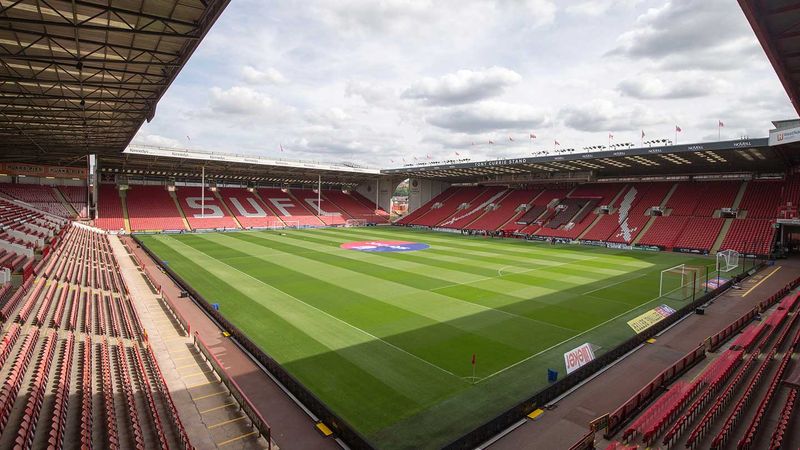
Few stadiums anywhere in the world boast a history as rich as Sheffield United's Bramall Lane, which has stood since 1855. The ground hosted the world’s first football tournament final—the now-defunct Youdan Cup—along with the first-ever floodlit match. It has been home to the Blades since the club's inception in 1889.
Before becoming primarily a football venue, Bramall Lane was mainly used for cricket. It also briefly served as the home for United's local rivals, Sheffield Wednesday, then known as "The Wednesday FC." The stadium didn’t host its first football match until 1862, a full seven years after its opening.
1. The Racecourse Ground (Wrexham)
Built 1801
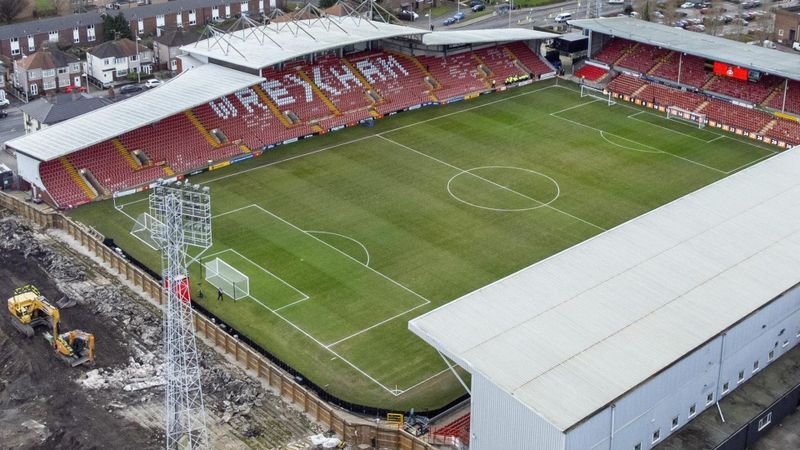
As its name implies, The Racecourse Ground was originally built in 1801 for horse racing events. Today, however, it is home to AFC Wrexham, the football club owned by Hollywood stars Ryan Reynolds and Rob McElhenney.
It is one of the oldest sports venues still in operation and holds the distinction of being the oldest football stadium to host international matches, with more Wales internationals played here than at any other venue.
Before the founding of Wrexham in 1864, The Racecourse Ground was used for cricket matches in addition to horse racing. In recent years, it has also hosted rugby league and rugby union games, as well as concerts.

Related Content


























